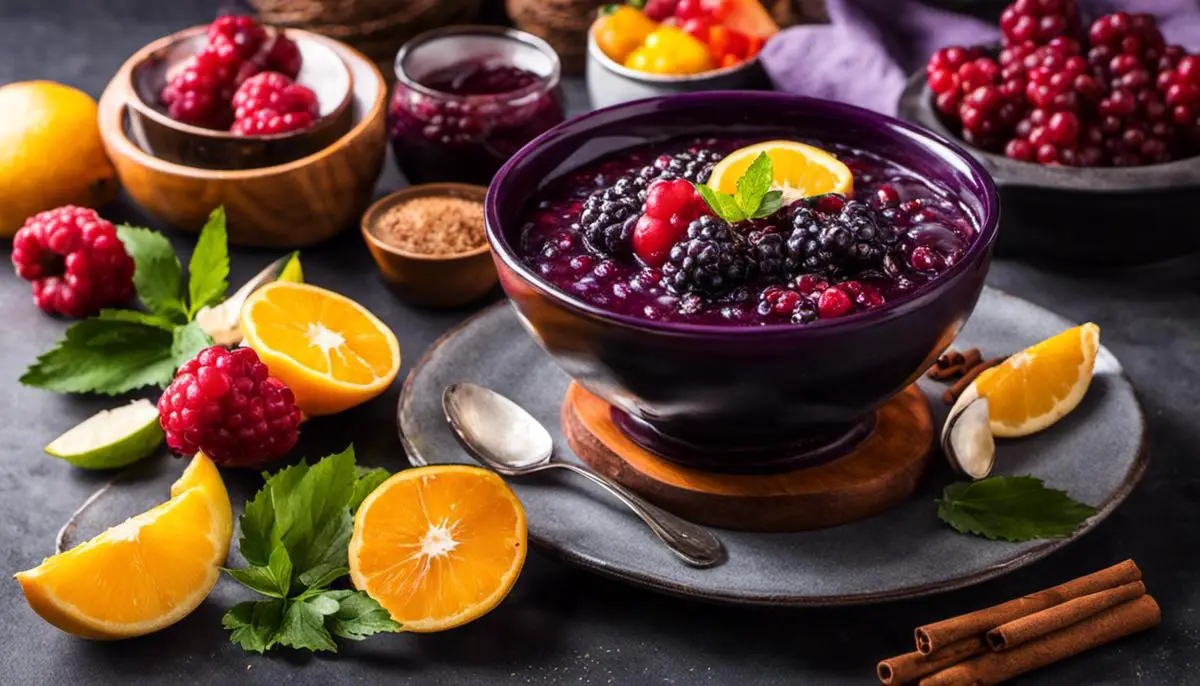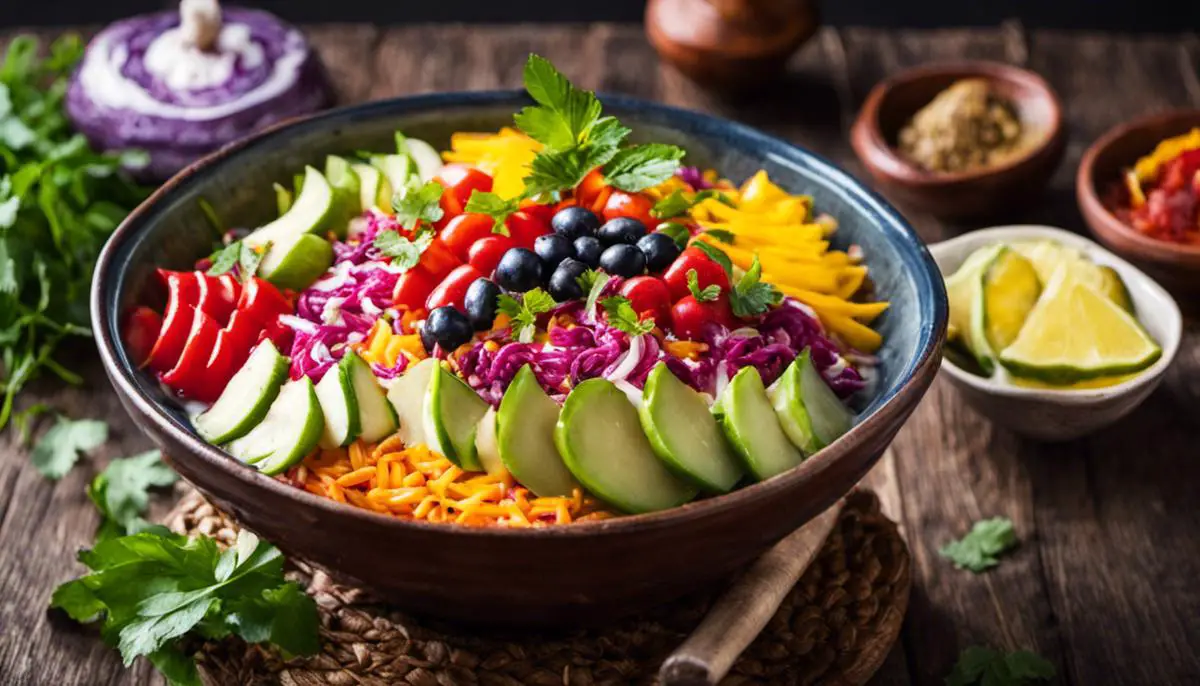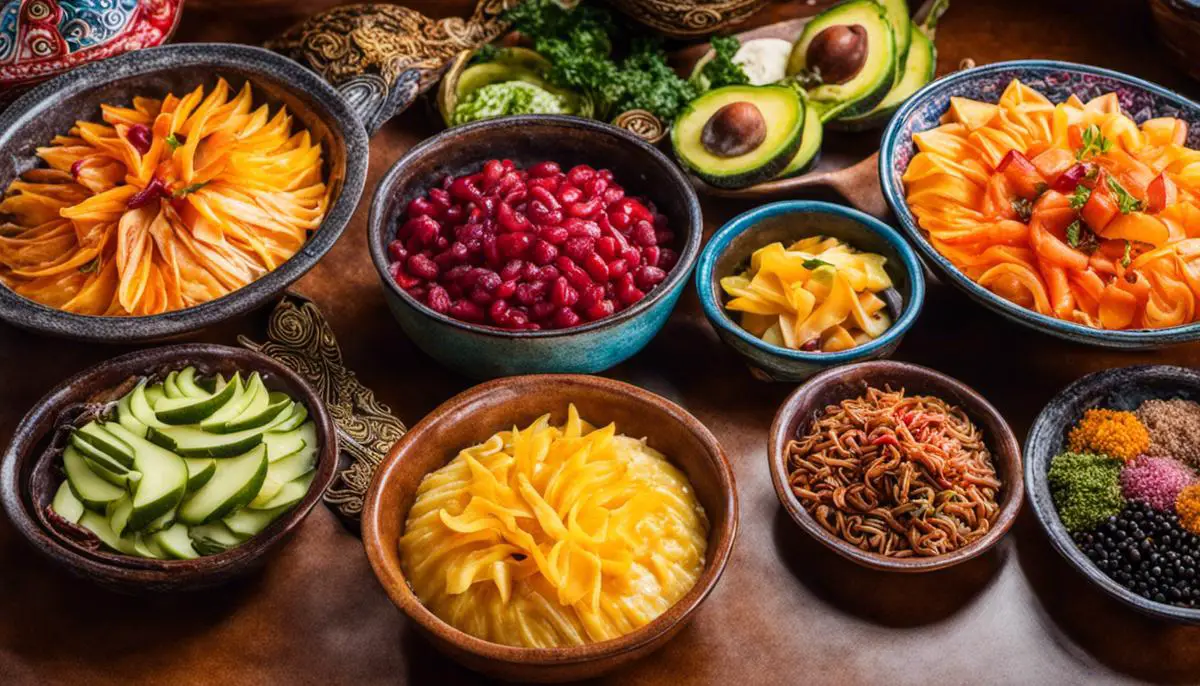
Steeped in cultural significance and filled with nutritional goodness, Mazamorra sits at the heart of many Latin American homes. A dish that testifies to the raw beauty of simple, real ingredients imbued with family traditions and an inviting hint of savory and sweet. Understanding Mazamorra means not only appreciating its variations and the effortless simplicity of its preparation, but also recognizing its nutritional value and its place in healthy, balanced eating. A cuisine that is as versatile as Mazamorra is heartily embraced by the contemporary kitchen, proving that it can meet the dietary requirements of any lifestyle, celebrating flavor, creativity and the joy of wholesome eating.
Understanding Mazamorra
Sultry and alluring, walking us down the lanes of gastronomic wonder, we delve into the enigmatic world of a little-known culinary gem known as Mazamorra. Hailing from the vibrant kitchens of South America, this dish, in its variation, has found a home across different cultures notably in Spain, Peru, and Colombia, each lending a unique twist to this fantastic dish.
Mazamorra struts onto the culinary catwalk with a simple yet robust flair. Traditionally, it is a concoction of purple corn flour or maize with water or milk. In appearance, akin to the humble porridge, but it comes to life with its dexterity flaunting itself as a dessert in some cultures, while a savory accompaniment in others. It is this versatility of the Mazamorra that tickles the taste buds and makes it an experience to savor.
A popular variant is the Mazamorra Morada, a Peruvian dessert. Reviving your senses, this sweet delight envelops the palette with a symphony of flavors. The scarlet depth of purple corn, cooked with a medley of fruits like pineapple, quince, and sweet potatoes, is then enhanced with the zest of lemon and cinnamon. The star ingredient perhaps, is the unassuming but powefully flavored chancaca, a raw sugarcane delight. The result is a rich, velvety, fruity dessert that sends ripples of bliss with every spoonful.
Colombians, on the other hand, relish their Mazamorra as a savory side dish, served cool, with their meals. This take on the dish extensively uses yellow or white maize that is typically soaked and then slow-cooked. It showcases its best hand when paired with traditional panela (unrefined cane sugar) or Bocadillo (guava paste). The Colombian Mazamorra is a testament to the raw, rustic taste of maize, elevating it to stardom.
In the Spanish rendition of Mazamorra, Andalusian gazpacho evolves into a white soup, sweetened with almond and garlic, fragranced with olive oil and vinegar. This Spanish twist accords it a class of its own, making it a delightful summer dessert or a lip-smacking appetizer.
Mazamorra is more than just a recipe; it is a celebration of culture that happens on our plates and dances on our palettes. A symbol of unity in diversity, bringing together seemingly simple elements which harmonize to create an extraordinary melody of flavors. A simple bowl of Mazamorra contains within it the essence of the people who have crafted it, their love for their heritage, and their innate desire to share this love with the world – making it a symphony for the senses that’s worth every savory note.

Nutritional Components of Mazamorra
Revel in the Nutritional Wonders of Mazamorra
Does your foodie soul long for a culinary discovery that’s not just captivating in flavor but also saturated with health benefits? If that’s an emphatic yes, meet Mazamorra, a culinary gem that’s gaining rave reviews from health enthusiasts around the globe.
Starting with its composition, Mazamorra is a veritable powerhouse of nutrients. In its Peruvian variant, purple corn serves as the primary ingredient, an intriguing substitute to the standard, yellow counterpart. This vibrant plant not only infuses the dish with a unique, majestic hue but also brings forth an array of health benefits. Purple corn is renowned for its ample dosage of anthocyanins, potent plant pigments that double as antioxidants. These incredible compounds perform an exuberant dance of combatting inflammation, lowering blood pressure, and reducing heart disease risk.
Let’s dive further into Mazamorra Morada, this Peruvian delight enchants not only with purple corn but also a plethora of fruits. Pineapple, quinces, apples, with a smattering of cherries and prunes in some recipes, pack this dessert with a serious dosage of vitamins and fiber. The vibrant orchestra of fruits amplifies the nutrient value, making it a sweet treat with substance.
In contrast, the Colombian version calls for yellow or white maize, another inviting menu for nutrient seekers. Characteristically rich in fiber, maize boosts the digestive health quotient of Mazamorra. Moreover, its protein, iron, and magnesium content account for a balanced nutrient profile that followers of quinoa, kale, or avocado would appreciate.
Spanish Mazamorra, despite its rich flavor profile, holds a deceptively simple list of ingredients. At its heart rest almonds and garlic, the former being a veritable storehouse of vitamin E, healthy fats, fiber, and protein, and the latter a well-known source of vitamin C, vitamin B6, and manganese. Therefore, savoring a bowl of Spanish Mazamorra translates to a delightful boost for heart health, immune function, and bone strength.
Deep down, Mazamorra weaves a phenomenal tale beyond taste and nutrition, serving as a model of culinary universality. No matter the variant, echoing the rhythm of cultural diversity, Mazamorra embodies the essence of unity. Whether it’s sweet or savory, lush or light, it’s a culinary classic that’s healthful, inviting, and a testament to the fact that great flavor and good nutrition need not be mutually exclusive. So, for those seeking a sumptuous route to health, Mazamorra offers an enchanting journey, definitely worth exploring. Happy tasting!

Mazamorra in a Modern Kitchen
If you’re a fan of culinary exploration and flavor fusion, you’re likely always on the hunt for new ways to shake up your kitchen routine. What better way to do so than by diving into the diverse world of Mazamorra? The enchantingly versatile dish known for gracing the culinary landscapes of Spain, Peru, and Colombia, is now set to zag through the modern home kitchen and create a true culinary adventure.
Embracing the dynamic nature of Mazamorra is the first step. Whether you have a sweet tooth or a savory craving, this versatile dish can fit the bill perfectly. For those looking for dessert inspiration, the Peruvian Mazamorra Morada, teeming with flavorful purple corn and a fruity symphony, is a quintessential sweet delight. A bowl of this vibrant dish could be the centerpiece of a dessert spread, without a doubt.
For the ones with an inclination towards savory dishes, the Colombian version of Mazamorra, rich with yellow or white maize, offers a whole new perspective. Served as a hearty side dish, it can create a delightful contrast of flavors alongside grilled meat or roasted vegetables.
Inspired by the soothing comfort of a warm bowl of soup, the Spanish version of Mazamorra incorporates almonds and garlic to transform it into a decadently creamy concoction. It’s an excellent opening act for a traditional Spanish meal, and a comforting option to warm you up on a chilly day.
Although these are some traditional versions of the dish, the beauty of bringing Mazamorra into your kitchen lies in the immense potential for customization. The addition of different fruits, nuts, or even spices brings forth the versatility and adaptability of Mazamorra to cater to individual tastes and dietary preferences. It showcases how this simple dish can transform and adapt, echoing the unity in diversity that it inherently represents.
While the incorporation of ingredients like purple corn or maize lends nutritional value to the dish, bringing these less common ingredients into your kitchen also offers an opportunity to diversify your nutrient intake. The fruits in the Peruvian Mazamorra Morada provide essential vitamins and antioxidants, while the almond and garlic in the Spanish version bring heart-healthy fats and immune-boosting properties.
Inviting Mazamorra into your everyday kitchen narrative isn’t just about embracing a new dish, but it represents welcoming a whole new culinary philosophy. It is about savoring the unfamiliar, daring to experiment, respecting diversity, and rejoicing in unity. So don’t wait; let Mazamorra take you on a delightful culinary adventure, forging new paths of flavor exploration and creating stories steeped in tradition and bound by the love for rich, deep, soulful food.

Pairing & Enjoying Mazamorra
Now, the quintessential question arises; how exactly do you savor this colorful bounty known as Mazamorra?
Before the first spoonful, take a moment to appreciate the delightful aromas swirling together. Whether it’s the unexpected combination of almond and garlic in the Spanish variant, the fruity undertones of the Peruvian style, or the earthy tones of Colombian Mazamorra, each summons a unique tapestry of scents that rouse the taste buds.
When indulging in Mazamorra, keep in mind the importance of temperature. The Spanish version, specifically, should be served chilled to emphasise its silky, smooth texture and to bring forward the subtle sweetness of almonds. Pair it with Spanish olives to add an element of tartness that compliments the soup’s almond-infused sweetness perfectly.
As for the Peruvian Mazamorra Morada, imagine the vibrant purple corn combined with a delightful mélange of fruits drizzled with a dash of cinnamon and clove. It’s a dessert best enjoyed cold, reflecting the tropical climate of Peru. The perfect pairing? Creamy vanilla ice cream on the side, enhancing the fruity notes, or perhaps a slice of Tres Leches cake for a double blow of sweetness.
On the savory side lies the Colombian Mazamorra. Traditionally, it is enjoyed with a glass of panela water (a sweet drink made from sugarcane) or a chunk of fresh cheese, which melts subtly into the warm, comforting bowl of hominy. You might even enjoy it along with a plate of Bandeja Paisa, the national dish of Colombia, for an authentic gastronomic voyage.
It’s important to remember Mazamorra as a sharing dish. In its diverse forms, the flavors speak to unity and friendship, bound by a collective love for hearty foods. Invite friends to dig into a large bowl placed at the center of the table, enjoy their expressions of surprise and delight as they savor the complex mix of flavors. Isn’t that what food is all about – exploring, sharing, savoring together?
Don’t be afraid to take your own spin on these age-old recipes. Maybe add a dash of brown sugar to the Colombian Mazamorra or perhaps cinnamon for a hint of warmth? The glory of Mazamorra is in its forgiving nature that allows for twists and turns, thus paving the way for a delightful culinary adventure.
Savoring Mazamorra is like embarking on a sensory journey, traversing the culinary landscapes of Spain, Peru, and Colombia, one spoonful at a time. It’s about embracing the diversity, tradition, and unity that this humble dish embodies, coaxing us to learn, appreciate, and celebrate other cultures through the language of food. So, go ahead and dive into the world of Mazamorra, indulge in the myriad of flavors and let this exotic dish awaken the adventurous food explorer within.

Packed with nutrients and endlessly adaptable, Mazamorra perfectly fits into every meal plan. Its rich cultural background makes each bite a delightful journey across Latin American traditions. Whether spicing up a family dinner, adding color to a festive feast, or complementing a weekday meal, Mazamorra can satisfy your craving for healthy comfort food. Armed with creative tips and tricks on preparation and pairing, you can make this dish the star of your dining experience. Dive into this versatile cuisine and discover how the humble Mazamorra can elevate your culinary adventures while promising a nutritional feast.



